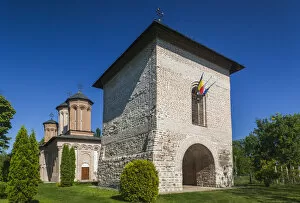Vlad Tepes Collection
"Vlad Tepes: The Legacy of a Ruthless Ruler and the Inspiration for Count Dracula" At the Old Princely Court in Bucharest's Historic Quarter stands a formidable statue
All Professionally Made to Order for Quick Shipping
"Vlad Tepes: The Legacy of a Ruthless Ruler and the Inspiration for Count Dracula" At the Old Princely Court in Bucharest's Historic Quarter stands a formidable statue, paying homage to one of Romania's most notorious historical figures – Vlad Tepes, also known as Vlad the Impaler. This imposing monument serves as a reminder of his brutal reign and enduring legacy. Venturing beyond Bucharest, we find ourselves in Snagov, where the Snagov Monastery serves as the final resting place of Vlad Tepes, and is here that he found eternal peace after a life filled with bloodshed and fear. Woodcuts from 1491 and 1488-93 depict Dracula himself – none other than Vlad Tepes. These artistic renditions capture his menacing presence, forever etched into history. Born in Sighisoara, Transylvania proudly claims this city as the birthplace of both Vlad Tepes and his infamous alter ego, Count Dracula. Stepping foot on its historic streets evokes an eerie sense of connection to these dark tales. Vlad III, Prince of Wallachia from 1431 until his death in 1476, was not only feared by enemies but also revered by some for his ruthless tactics against invaders. A German master artist immortalized him during the second half of the sixteenth century through their intricate artwork. Lipscani Old Town in Bucharest houses another statue dedicated to Vlad Tepes – a chilling reminder that even centuries later, his name still sends shivers down spines. Though often associated with horror fiction thanks to Bram Stoker's novel "Dracula, " it is important to remember that behind this fictional character lies an actual historical figure who left an indelible mark on Romanian history.








